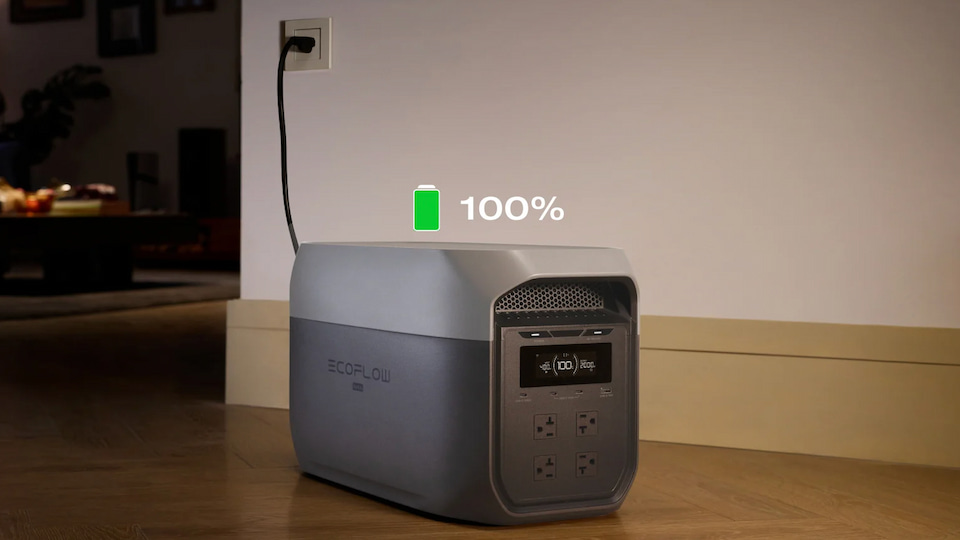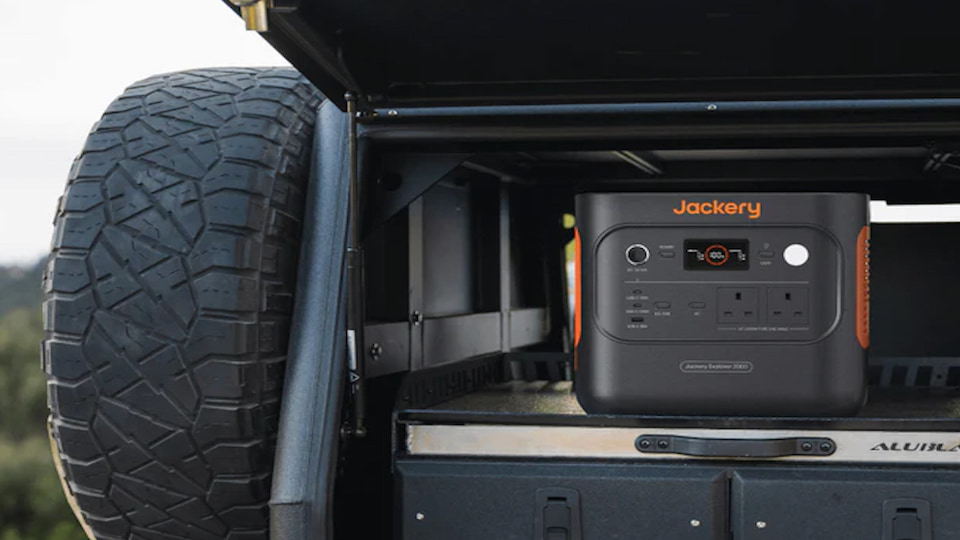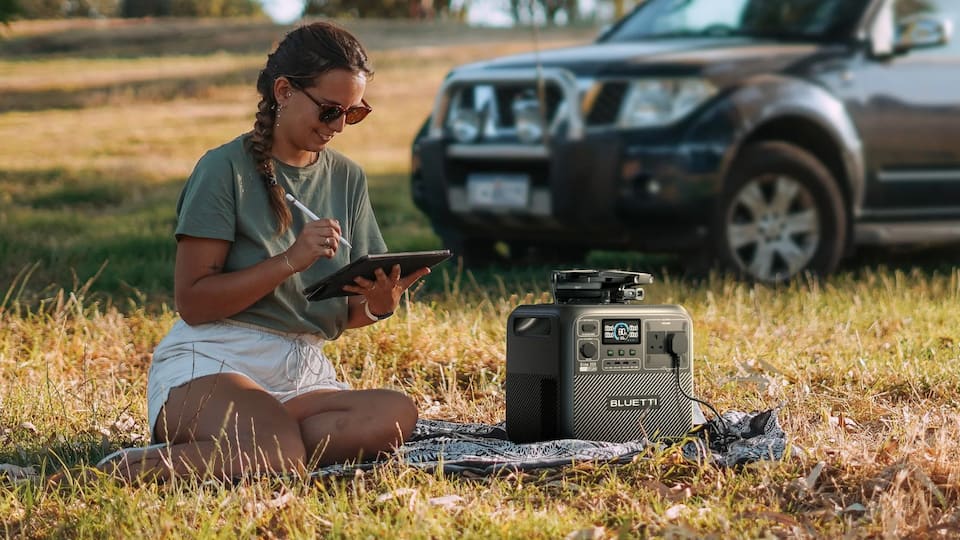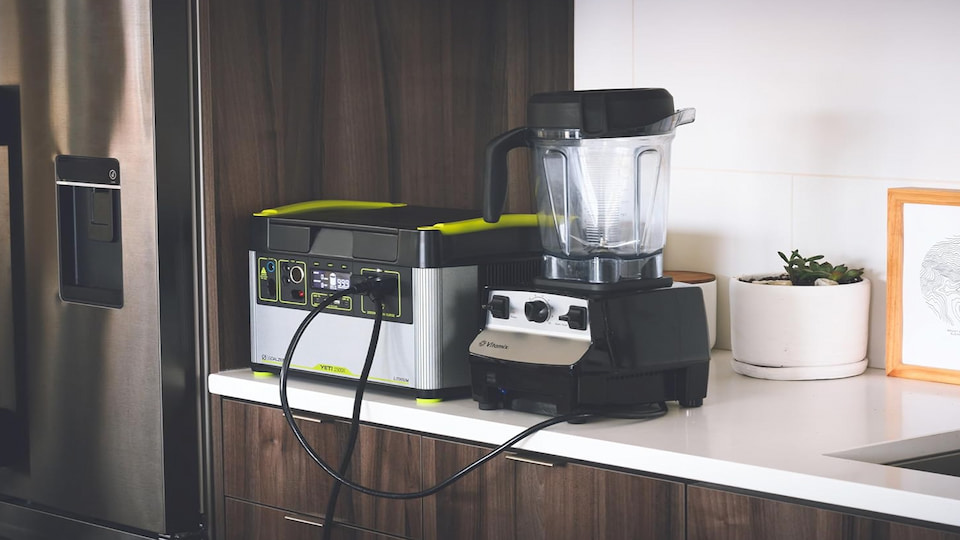2025’s Best Portable Power Station 2000W for Camping & Home Backup
Power cuts, camping trips, DIY projects, whatever takes you off the grid, a portable power station makes life simpler. And when it’s a 2,000W model, you’re getting a compact battery unit that can power not just lights and laptops, but also kettles and fridges, all without the noise or fumes of a generator.
In 2025, the latest designs are lighter, charge faster, and come packed with smart features that work for both home backup and travel. Before you pick a portable power station 2000W, though, it’s worth knowing which details actually matter. This guide keeps it easy: what to look for, the best models this year, and a few quick tips to use yours safely.
Key Features to Look for in a 2000W Portable Power Station
When you’re shopping for a 2000W portable power station in the UK, that number is more of a powerful category than a strict limit. It usually means the unit delivers around 2,000 watts of continuous output, not exactly that figure. In practice, many models run a bit higher, at 2,200W or 2,400W, while others sit slightly below, at about 1,800W.
What really matters is what it can comfortably power. Think of running a 1,600W hair dryer during an outage, or keeping your mini fridge, lights, phone chargers, and a 1,000W electric grill all going on a camping weekend.
Here’s how to compare your options and know what’s worth your money.
Power output: continuous vs surge
Check that the continuous output of the inverter is about 2,000W and also note the surge (peak) rating for start-up spikes. Continuous watts tell you what it can run steadily, while surge watts cover short bursts of extra demand, like when a fridge or power tool first kicks on.
A quality 2,000W inverter typically offers a surge capacity of 4,000W or more. For the best performance, choose a pure sine wave inverter, which produces clean, stable power that’s safe for sensitive electronics such as laptops.
Battery capacity (Wh)
Watts tell you how much power a station can deliver at once. Watt-hours (Wh) tell you how long it can keep going. A power station portable at 2,000W often has a battery around 2,000Wh as well, though it may be higher or a bit lower.
The calculation is pretty simple:
Wh = Watts × hours.
So, a 2,000Wh battery could run a 2,000W load for about one hour.
In a realistic half-day outage, you might plan:
lights: 10W × 6h = 60Wh
Wi-Fi router: 10W × 6h = 60Wh
fridge (running watts): 100W × 12h = 1,200Wh
microwave: 1,300W × 15min = 325Wh
hair dryer: 1,600W × 15min = 400 Wh
Total ≈ 2,045Wh, which shows how a 2,048Wh battery could just about cover those loads.
The key is: check what devices you plan to power and how long, so you can decide if you need a higher-capacity battery or not. Some models offer extra battery packs so you can expand runtime when needed. For example, the EcoFlow DELTA 2 Max Portable Power Station + Smart Extra Battery provides 4,096 Wh total capacity, enough to run multiple appliances for extended periods and expand runtime as needed.
EcoFlow DELTA 2 Max Portable Power Station + Smart Extra Battery
Battery type and lifespan
Most newer portable power stations use LiFePO₄ (lithium iron phosphate) batteries. They’re safer, more stable, and last thousands of charge cycles, a big upgrade from older lithium-ion types. If you plan to use your power station often, LiFePO₄ gives you a much better return over time.
Outlets and ports
Think about what you’ll plug in. A solid 2kW-class station should include:
Several UK AC sockets (BS 1363) for standard plugs
USB-C PD ports (100W or higher) for laptops and fast charging
USB-A for smaller devices
12V DC outlets for coolers, pumps, or lights
Charging options and speed
Fast, flexible charging makes a big difference. The best portable power stations can now recharge fully in two hours or less from the wall. Solar charging is another big plus. Look for units with MPPT controllers, which help you get the most out of solar panels, even on cloudy days. Most also support car charging, though it’s slower. Having all three options gives you flexibility at home, in the car, or on the go.

Ease of use and app control
Many modern stations now connect to a mobile app. This lets you monitor power use, see input/output in real time, and sometimes set charge limits or quiet modes. Firmware updates through the app can also add features or improve efficiency later on, a small but practical perk.
Build, cooling, and noise
Portable doesn’t always mean lightweight. Many 2000W units weigh 20–30kg. Look for handles or wheels if you plan to move it around often. Good ventilation matters, too. Fans help the inverter stay cool, but the quieter the system, the better for indoor or overnight use.
Safety and protection
Always check for built-in protection systems: overvoltage, short circuit, and temperature control at a minimum. If you’ll use it outdoors, look for an IP rating that shows how resistant it is to dust and light rain. And make sure it carries the right safety certifications (like CE or UKCA marks).
Best 2000W Portable Power Station in 2025
Now that you know what to look for, let’s see some top-rated models. Below are four reliable options available in the UK for 2025, each offering a slightly different balance of power, portability, and long-term use.
1. EcoFlow DELTA 2 Max Portable Power Station
The EcoFlow DELTA 2 Max Portable Power Station also uses a 2048Wh LiFePO₄ pack and delivers 2400W AC (4800W surge) with X-Boost up to 3100W for demanding loads. If you need more runtime, you can expand to 6144Wh with two extra batteries, handy for longer outages.
Charging is flexible and quick: fast 2300W AC via X-Stream and up to 1000W solar input (dual MPPT) for efficient daytime top-ups. Four UK sockets, USB-C PD ports, and app control make it easy to manage. Slightly heavier at ~23 kg, it’s still portable enough for regular use at home or away.
EcoFlow DELTA 2 Max Portable Power Station
Key features
2048Wh base capacity; expandable to ~6.1 kWh with extra batteries.
2400W AC output (4800W surge); X-Boost 3100W for short peaks.
Fast AC charging (up to 2300W) and solar input up to 1000W; MPPT for efficiency.
LFP chemistry, rated ~3000 cycles to 80% capacity.
4 AC outlets on the UK version; Wi-Fi/Bluetooth app control.
2. Jackery Explorer 2000 v2 Portable Power Station
The Explorer 2000 v2 is a simple, dependable pick for users who want clean power without setup fuss. It offers 2200W rated AC with a 2042Wh LiFePO₄ battery, so it easily runs kettles, small heaters, or power tools.
Jackery’s Emergency Super Charge tops up the battery in just 1.33 hours, and a UPS-style 20 ms switch keeps devices stable during brief cuts. You can recharge by wall, car, or solar, and control settings through the Jackery app.

Key features
2042Wh LiFePO₄ battery for long cycle life and stable performance.
2200W rated AC output for high-draw appliances.
Fast AC recharge, with Emergency Super Charge for quick top-ups.
UPS-style switchover ~20 ms to bridge brief outages for sensitive devices.
3. BLUETTI Elite 200 V2 Portable Power Station
BLUETTI’s Elite 200 V2 packs 2073.6Wh LiFePO₄ capacity with a 2600W inverter and Power Lifting up to 3900W, strong enough for heavier kitchen or workshop tools. It recharges to 80% in about 1.1 hours and takes up to 1000W solar through MPPT for fast recovery in daylight.
Two 100W USB-C ports, classic USB-A, and a 12V car socket cover most devices. With 6000+ cycles and a 5-year warranty, it’s built to last for years of regular use.

Key features
2073.6Wh LiFePO₄; 6000+ cycles (to 80%) for long service life.
2600W AC output, Power Lifting 3900W for short peaks on resistive loads.
AC fast charge to 80% ~1.1 h; solar input up to 1000W.
2× USB-C 100W, USB-A, and 12V car port cover everyday gear.
AI-BMS monitoring and 5-year warranty for peace of mind.
4. Goal Zero Yeti 1500X Portable Power Station
The Yeti 1500X offers 2000W continuous (3500W surge) from a 1516Wh lithium-ion battery. It’s slightly smaller in capacity but highly dependable, with MPPT solar charging and 600W input support.
It has dual AC outlets, USB-C PD 60W, and regulated 12V DC outputs, plus an expansion port for larger setups. You can use and charge it at the same time, and it’s designed to integrate cleanly with solar kits or van systems.

Key features
2000W AC (3500W surge), pure sine wave.
1516Wh Li-ion NMC battery; MPPT charge controller built in.
Up to 600W input via High-Power Charging port.
Ports: 2× AC, USB-C PD 60W, USB-A, regulated 12V car/6 mm outputs.
Weight ~20.7 kg
Simultaneous charge & discharge supported.
Quick comparison
Model | Battery Capacity | Continuous / Surge Output | Battery Type | Fast Wall Charging | Solar Input | Weight | Notable Strength |
EcoFlow DELTA 2 Max | 2048–6144Wh (expandable) | 2400W / 4800W | LiFePO₄ | 0–80% in ~53 min | Up to 1000W | ~23 kg | Expandable capacity + solar efficiency |
Jackery Explorer 2000 v2 | 2042Wh | 2200W / 4400W | LiFePO₄ | 0–100% in ~1.33 h | Up to 400W | ~17.5 kg | Simple UPS use + quick setup |
BLUETTI Elite 200 V2 | 2073.6Wh | 2600W / 3900W | LiFePO₄ | 80% in ~1.1 h | Up to 1000W | ~24.2 kg | High output + long battery life |
Goal Zero Yeti 1500X | 1516Wh | 2000W / 3500W | Li-ion NMC | 0–100% in ~3 h | Up to 600W | ~20.7 kg | Rugged design + solar integration |
How to Use a 2000W Portable Power Station Safely and Effectively
A 2000W portable power station can stand in for a small generator, powering essentials, tools, or camping gear with ease. It’s safe and dependable when used right, but careless use can shorten its life or harm your devices. Here’s how to keep it running safely and efficiently.
Read the basics before plugging in
Every model handles charging and load limits a little differently. Take five minutes to skim the manual, especially the sections on max output, charging limits, and pass-through use (using it while it’s charging). It’s the easiest way to avoid tripping breakers or overloading the inverter.
Match the load to the output
A 2000W power station can supply around 2000 watts of continuous power. To play safe, add up the wattage of home essentials or glamping accessories you want to run, like a kettle (1200W), plus a mini fridge (100W), plus a laptop (100W), plus lights (50W), and make sure the total stays below that limit. Most power stations cut power automatically if you exceed it, but it’s best not to push it.
Also keep an eye on starting watts. Devices with motors or heating elements often draw up to twice their running power when they switch on, so make sure that spike stays below the station’s surge rating.
Keep ventilation clear
Power stations generate heat when charging or running heavy loads. Set yours on a hard, flat surface with space around the vents. Don’t cover it with blankets or leave it in direct sun for hours, especially inside a vehicle on a warm day. Heat shortens battery life and can trigger automatic shutdowns.
Charge smartly
For long battery life, try to avoid deep discharges (down to 0%) and overcharging (leaving it plugged in for days). LiFePO₄ batteries in newer models prefer staying between roughly 20–80% most of the time.
If your model has charge limits or storage mode in its app, enable them. They help the battery age more slowly. When storing for months, charge to around 50% and keep it in a cool, dry spot.
Use the right cables and ports
Stick to the cables supplied or recommended by the manufacturer. Cheap third-party cords may not handle full current or might lack proper insulation. Check that your plugs fit snugly, and only use grounded AC sockets for large appliances.
Stay weather-aware
Even if a power station advertises some water resistance, avoid exposure to rain or damp ground. Moisture can corrode contacts or cause short circuits. If you use it outdoors, raise it slightly off the ground and keep it under shelter. For solar setups, angle the panels securely and unplug during lightning or storms.
Keep an eye on output and temperature
Use the display or app to monitor power draw and battery percentage. If you notice rapid drops or rising internal temperature, reduce the load and let the fans catch up. Consistent monitoring helps you spot potential issues before they become faults.
Store and transport with care
Before storing, charge it to roughly half, power it off fully, and keep it somewhere cool, ideally around 15–25°C. When transporting, use the built-in handles or wheels. Avoid jolts or prolonged vibration, which can damage internal cells.
Conclusion
A portable power station 2000W gives you steady, quiet power wherever you need it, at home, on the road, or off the grid. The best models balance strong output, long-lasting LiFePO₄ batteries, and fast recharging options like solar or wall input. By matching capacity to your needs and using it safely, you’ll get reliable backup for years. Whether it’s for outages, travel, or daily convenience, a well-chosen 2000W unit is one of the simplest ways to keep life powered without the noise or fuel of a generator.
*The brands referenced in this article are provided for informational purposes only and do not indicate any partnership with EcoFlow.
FAQs
What does a 2000W rating mean?
A 2000W rating tells you how much electrical power a device can use or deliver at any one time. In simple terms, watts measure how fast energy is consumed or produced. For example, an electric oven rated at 2000W draws 2000 watts of power when running at full capacity.
When a portable power station says “2000W,” it means it can deliver up to 2000 watts of power at once. That’s the maximum amount it can safely supply to your plugged-in devices. Most units also handle short bursts of higher “surge” power (3500W~4000W) for things like fridges or drills when they first start up.
What can a 2000W portable power station run?
A 2000W portable power station can run most small and medium household or outdoor appliances without fuss. You can usually power your laptop, TV, router, fridge, lights, and phone chargers all at once. It can also handle short bursts from higher-draw items like a microwave, kettle, hair dryer, or small power tools.
On camping trips, it’s great for mini fridges, electric grills, induction cookers, and fans. Just remember that heavy hitters like electric dryers, heaters, or central air systems often need more than 3000 watts. To stay safe and efficient, add up each device’s wattage and keep the total under 2000 watts.
Can I run a fridge on a 2000W portable power station?
Yes, you usually can. Most fridges only use around 100 to 800 watts once they’re running, but they need a brief power surge, sometimes up to 2500 watts, when the compressor starts. A 2000W power station with a good surge rating can handle that startup spike without trouble. Once it settles, the fridge cycles on and off, which helps save energy. With a 2000Wh battery, you could expect many hours of cooling during an outage, depending on how often the compressor kicks in. Always check your fridge label to be sure it fits within the limits.
Is 2000W enough to power a household during a blackout?
For the basics, yes, it’s plenty. A 2000W unit can keep your essentials going, like lights, a Wi-Fi router, phone chargers, a fridge, and even a gas boiler’s pump and controls. Just be careful with high-power items such as electric showers, ovens, or kettles, as these can draw well over 2000 watts.
The real limit is how much energy your battery stores, not just its watt rating. To stretch your backup time, focus on essentials and avoid running heavy appliances. Used wisely, a 2000W power station can keep your home comfortable through most short power cuts.